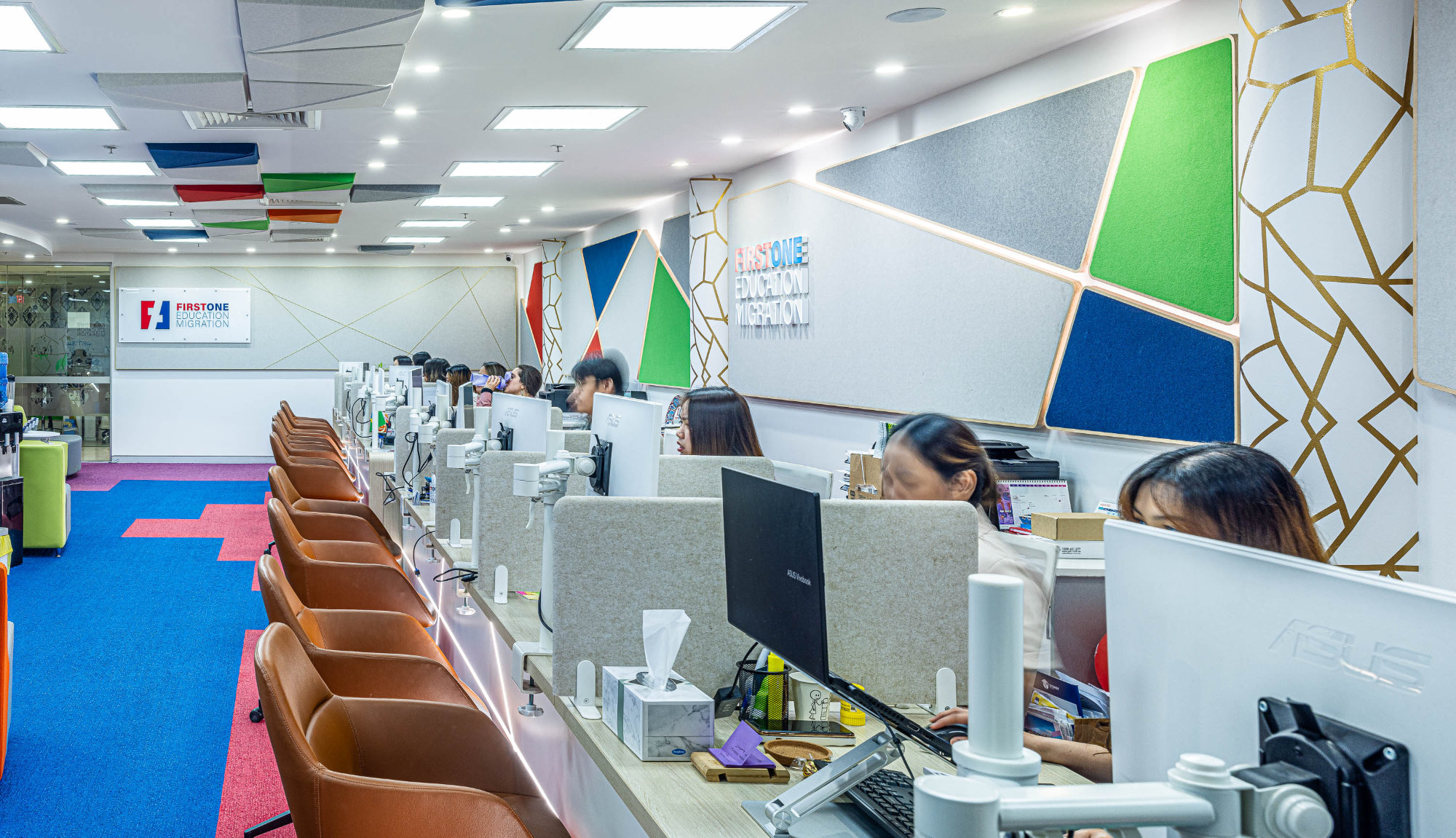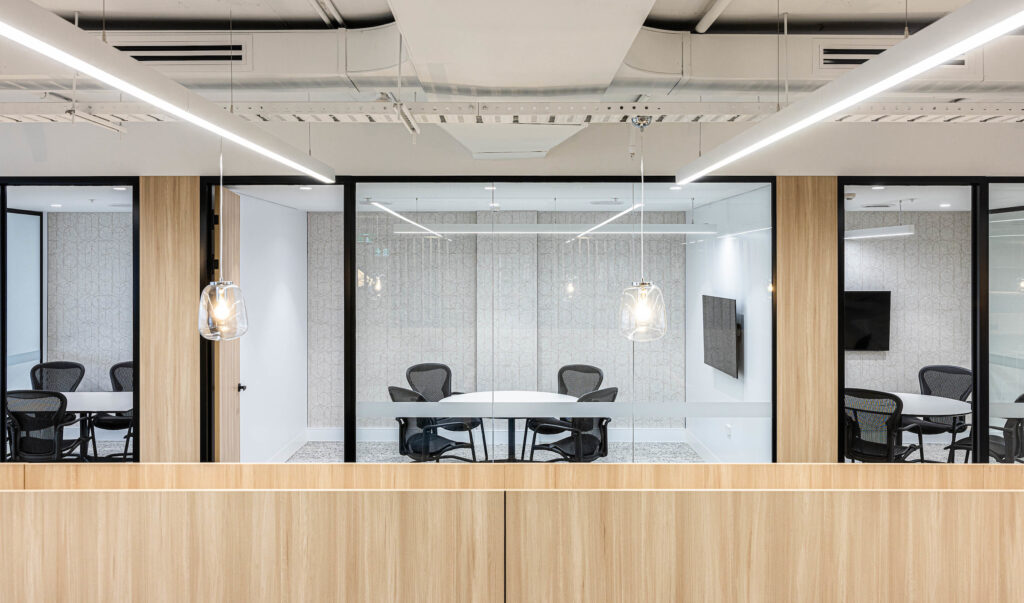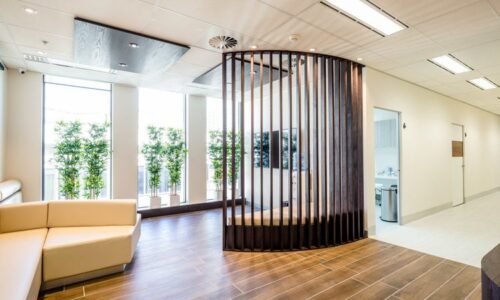It seems like every office is going open plan these days.
An open plan office is said enhance communication, teamwork & innovation – however, they aren’t for everyone.
So, when planning your office fitout, the question you will need to ask is – “is an open plan office right for your company?”
Like any office layout, open plan offices come with their own set of pros & cons and deciding whether this concept is suitable for your company requires careful consideration.

Open Plan Offices have their Advantages:
Better Communication & Collaboration:
By removing physical barriers & encouraging interaction among team members, open plan offices facilitate seamless communication & collaboration. Team members can easily approach each other, leading to increased productivity and synergy within the organisation.
Reduced Hierarchy:
Open plan layouts promote a sense of equality among employees by eliminating the traditional hierarchical structure commonly found in closed office setups. This fosters a more inclusive & transparent work environment where ideas can flow freely regardless of your job title.
Cost-Effectiveness:
From a financial point of view, open plan offices are often seen as a cheaper option – they easier to set up and maintain compared to traditional cubicle-style office layouts, requiring fewer materials and less construction, making them a budget-friendly option for businesses, especially startups.
Flexibility & Customisation:
Open plan offices offer flexibility in terms of layout and design, allowing businesses to adapt the space to their evolving needs. Whether accommodating rapid growth or catering to different work styles, open plan layouts can be easily reconfigured to suit changing requirements.
Natural Light & Ambiance:
With fewer walls and partitions, open plan offices allow natural light to permeate the space, creating a brighter and more inviting atmosphere. Natural light has been linked to improved mood, focus, and overall well-being, enhancing the working environment for employees.

Open Plan Offices have their Disadvantages:
Noise & Distractions:
One of the most significant drawbacks of open plan offices is the increased noise levels & distractions. Constant background chatter, phone calls and other disruptions can negatively impact concentration and productivity.
Lower Productivity:
Studies have shown that employees working in open plan offices tend to experience reduced productivity due to interruptions and distractions. The lack of privacy and constant exposure to stimuli can lead to decreased engagement and job satisfaction among staff members.
Lack of Privacy:
Open plan layouts offer minimal privacy, which can be challenging for introverted employees or those who require quiet, focused work environments. Sensitive discussions, performance reviews, and confidential meetings may be difficult to conduct without designated private spaces.
Intimidating Atmosphere:
Some employees may feel uncomfortable or self-conscious in an open plan setting where they are constantly visible to their colleagues. This sense of being under scrutiny can affect morale and hinder creativity, particularly for individuals who prefer more privacy.
Compatibility with Work Type & Size:
Open plan offices may not be suitable for certain industries or organisations with specific work requirements, such as those dealing with confidential information or noise-sensitive tasks. Additionally, managing a large number of employees in a shared space can pose logistical challenges.
Finding the Right Balance – how to decide if an open office concept is right for your business
Ultimately, the decision to adopt an open plan office should be based on the unique needs & preferences of your company. While open layouts offer many benefits in terms of communication and flexibility, they also require thoughtful design & management to make them work.
To improve the open plan environment, integrating elements such as sound-absorbing materials, designated quiet areas, and flexible furniture arrangements can help create a more balanced and productive workspace. It is also a good idea to ask your team for feedback on if it is working or not – soliciting feedback from employees and regularly assessing the effectiveness of the office layout can ensure that it remains conducive to collaboration and well-being.
In conclusion, open plan offices are not inherently good or bad.
They be a valuable asset for fostering teamwork and innovation, but they require careful consideration and adaptation to suit the specific requirements of your company. By striking the right balance between openness and privacy, you can create a workspace that promotes productivity, creativity and ultimately employee satisfaction.


